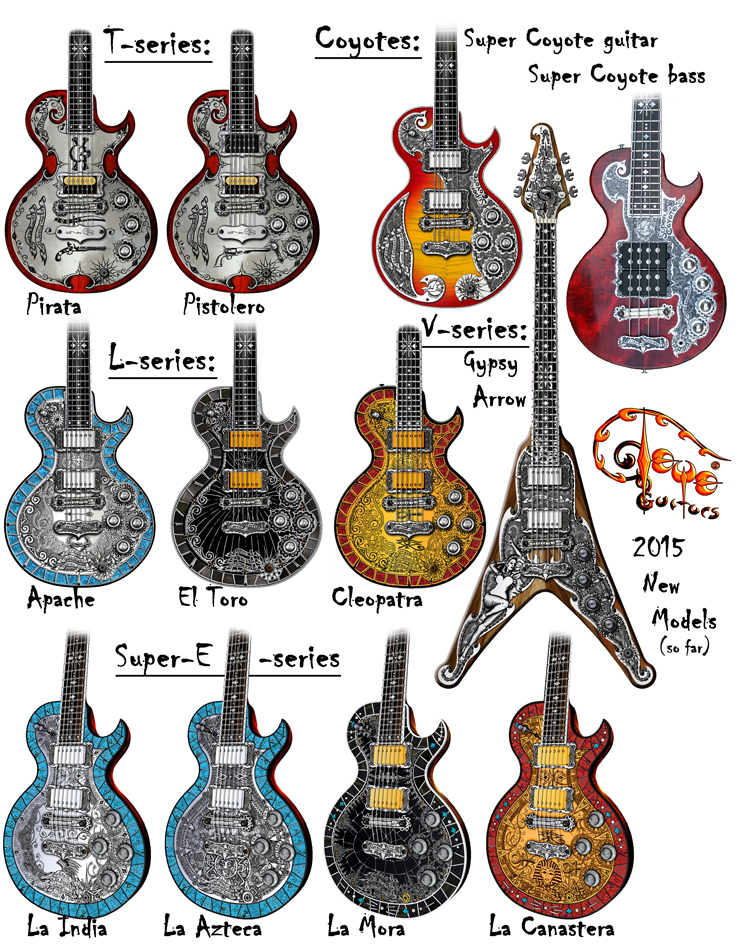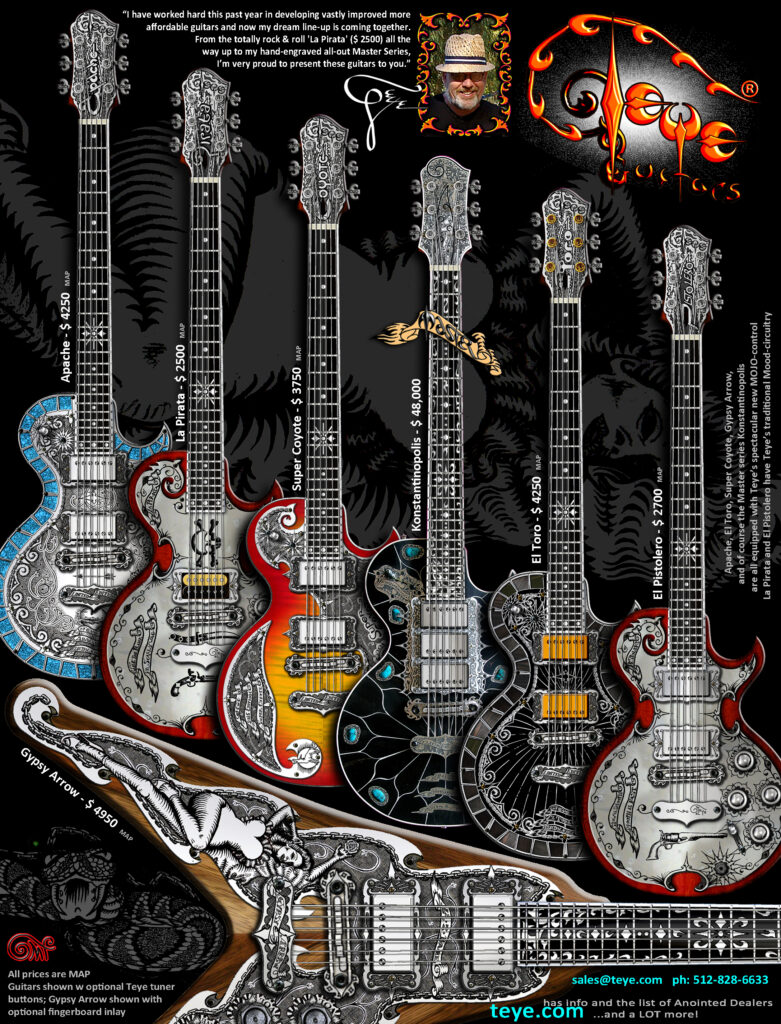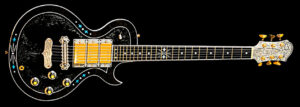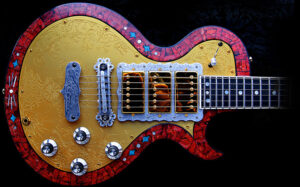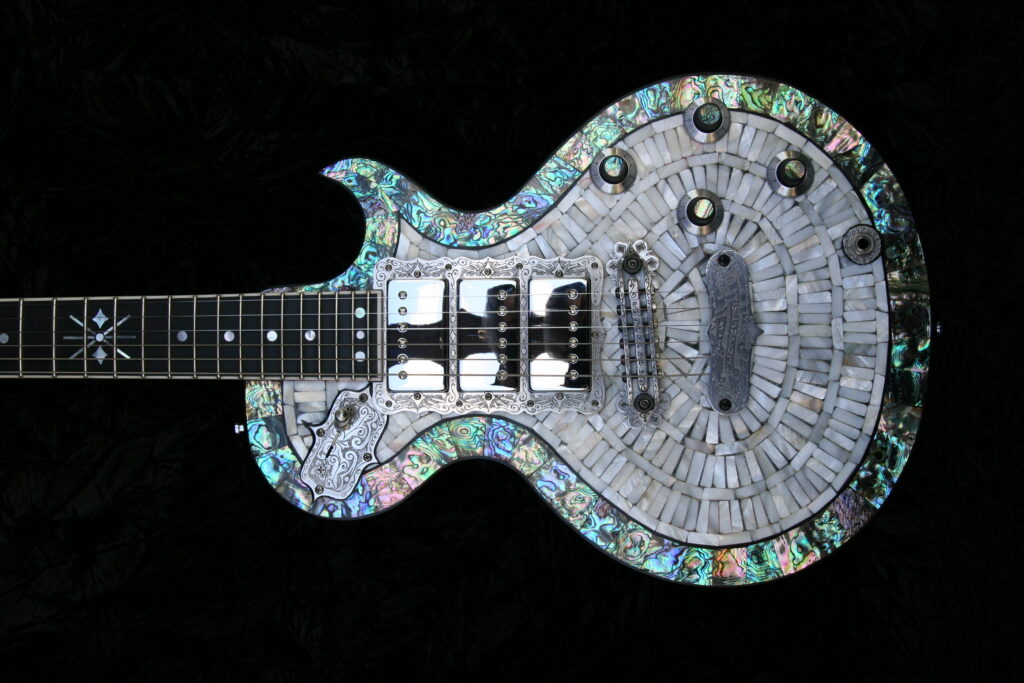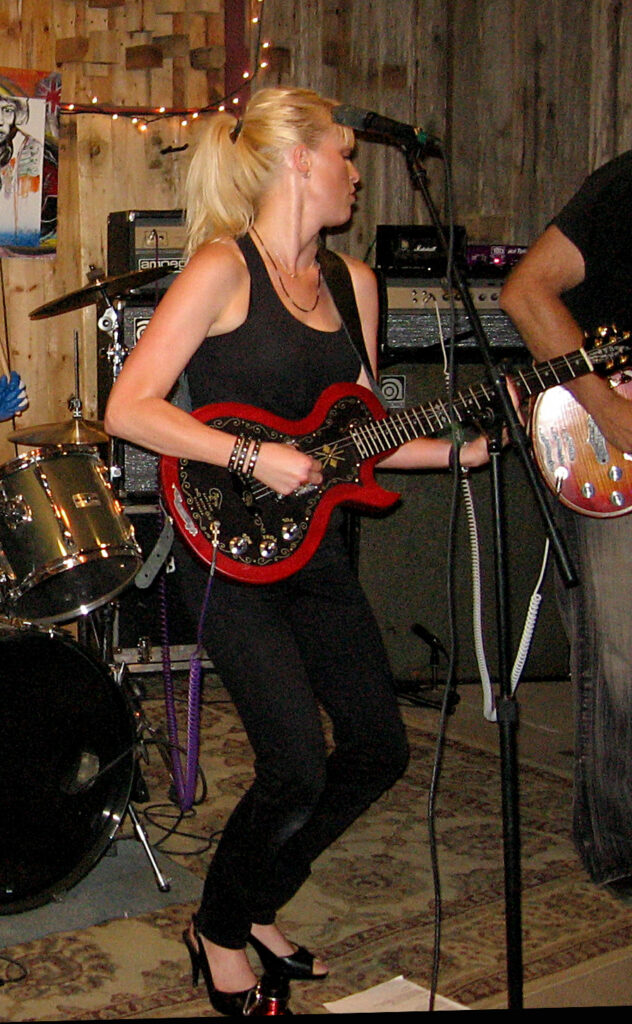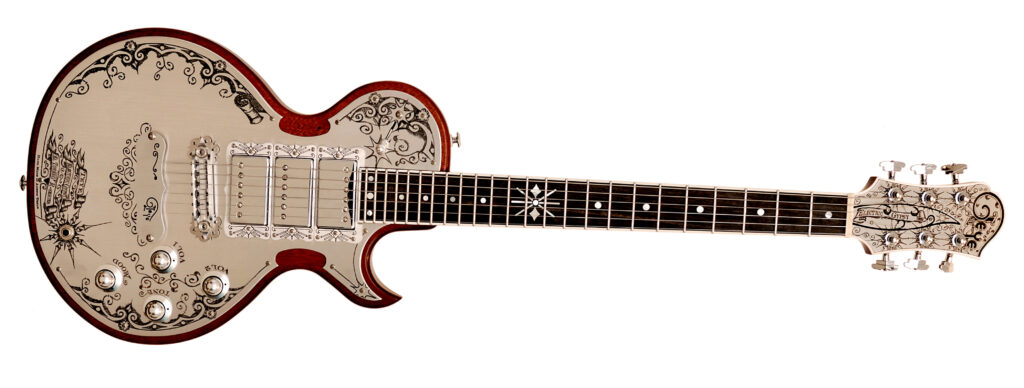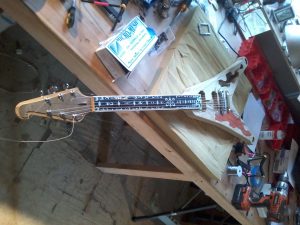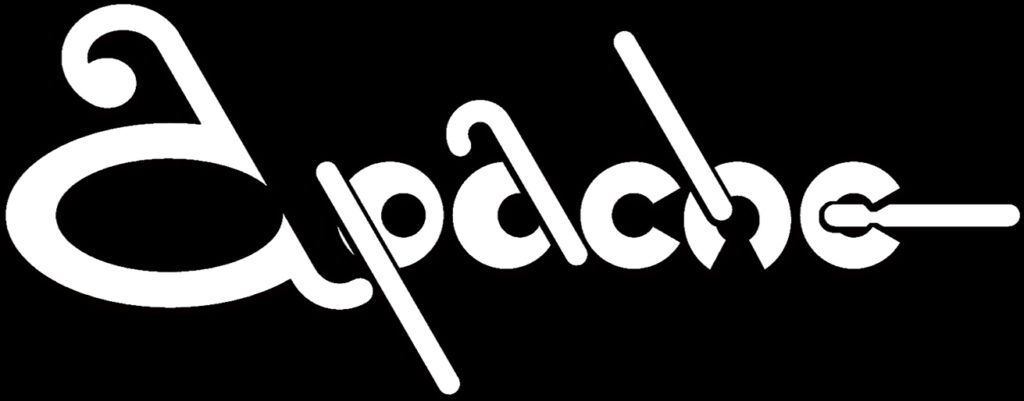All those different Series (a mini-History of Teye guitars).
Okay. On average once every single week I receive an email asking for information (specific or additional) on my different series thru the years, often accompanied by a remark/politely voiced complaint that this info cannot be found anywhere on my websites (production- nor Maste-site) and THAT alas is the simple truth of it. So I’ve tried to remedy that shortcoming. And that is how/why you are now on THIS PAGE. I sincerely hope you’ll enjoy reading all this! Sincerely, Teye

so I started in late 2004 with a guitar I made totally for myself and so completely by myself. (For the story on my very first guitar made by my father and me in 1981, see HERE) Hand-engraved plates, hand-made neck, hand-made bridge and tailpiece, we now refer to her as the ‘000’ or ‘Triple-oh’. I first performed with her on Halloween in the shed where some of the movie ‘The Texas Chainsaw Massacre’ had been filmed… My bass player commented, “If you HAVE THIS, I cannot see you ever wanting another guitar.” He was wrong, of course,
The very first ‘La India’
(The bug has bitten and I’m now as a guitar builder, apparently)

I got cocky and decided to build another, but this time without all those pesky reasonable restrictions. Completely reverse-thinking-wiring, 3 pickups (of course!) and in general, ‘the sky’s the limit, no holds barred, “whatever you can think of” stubborn Teye-thinking. This became the ‘001’ and I gave her the name ‘La India’ because she combined the shiny silver-colored aluminum with aa turquoise mosaic. The model I called ‘Electric Gypsy’ to honor both Paco de Lucia and Jimi Hendrix, my main Guitar heroes.
That very very first 2004 ‘Triple-Oh’ bytheway received the 1st ‘Mood-knob’ as a matter of fact by chance: the pickups of my choice (after trying out a dozen different types) Seymour-Duncan Jazz humbuckers were available immediately with 4-conductor-wiring and were on back-order many weeks with the push-back wires which I actually would have preferred) So not willing to wait, I nought the 4-conductor-ones, and thus had a bunch of extra wires hanging out of those pickups and I decided to play around a little, using remarks I once overheard between a good friend guitar builder in the Netherlands and his brother, in 1978, as basis!
The ‘001’ “La India” (having 3 pickups) pushed my experiments into overdrive and incredible enough I was able to fine-tune it all so I could realize a long-time dream of coaxing big fat Les Paul Tones, but also those lovely Strat growls, AND Telecaster Tones both Twang and Keith, out of ONE GUITAR. Meaning I could effectuate a ‘guitar change’ in the middle of a solo, right on stage!
The wiring and switch turned into a mix of spaghetti and the cat’s wool, but all that was hidden deep inside, actually started to epoxy-pot my secrets. I needed some kind of mold, and tried to figure out a way to get the epoxy once it set out of the mold, then I thought “Why? I can just leave it in the mold” and started a messy test with a piece of folded cardboard.
Now wouldn’t it be great if I could find a throw-away onject that could replace that folded cardboard? Just then I put back the cap on my bottle of sparkling water and could not believe it: with a slight re-positioning of the components, the entire Mood-shebang fit into that bottle cap! This is spring of 2006 and all guitars I made since then have a bottle cap hiding the electronics! My kids have used these in recycling-demonstration-projects.
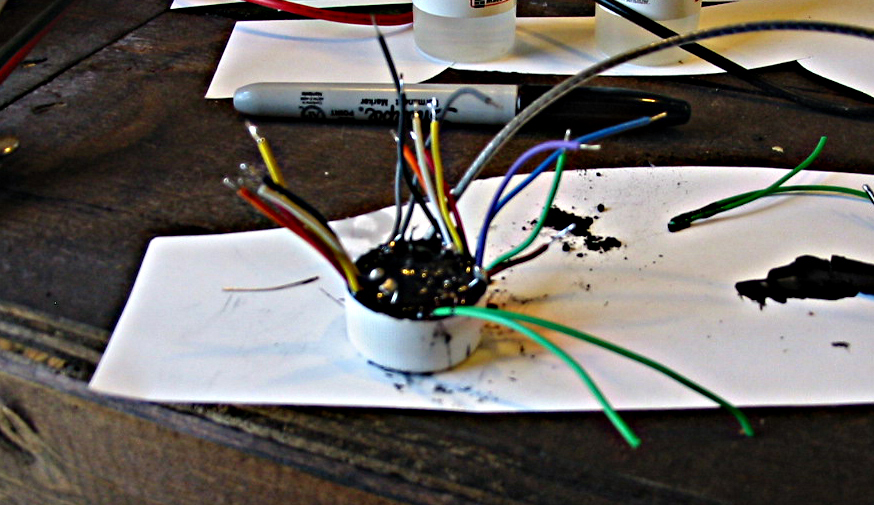
I built a total of 20 of these, mostly La Indias, then for a friend who only liked black guitars I designed and built a La Mora, and then for a customer who wanted something unique, a guitar with gold anodized plate and coral mosaic (a nod to the traditional Gypsy jewelry in Spain, and called her the La Canastera, being one of the classic jobs of spanish Gypsies.
Then on a hunch I nuilt an all-pearl top with abalone ring mosaic (La Perla) and before I glued that pearl on, I was struck by how the maple cap insert (underneath all the pearl) looked fantastic inwide that Mahohany body and designed and built the La Llama (The Flame) with a protruding maple insert into the Korina (that was also the time when I switched from Mahogany to black spalted Limba AKA ‘Korina’)
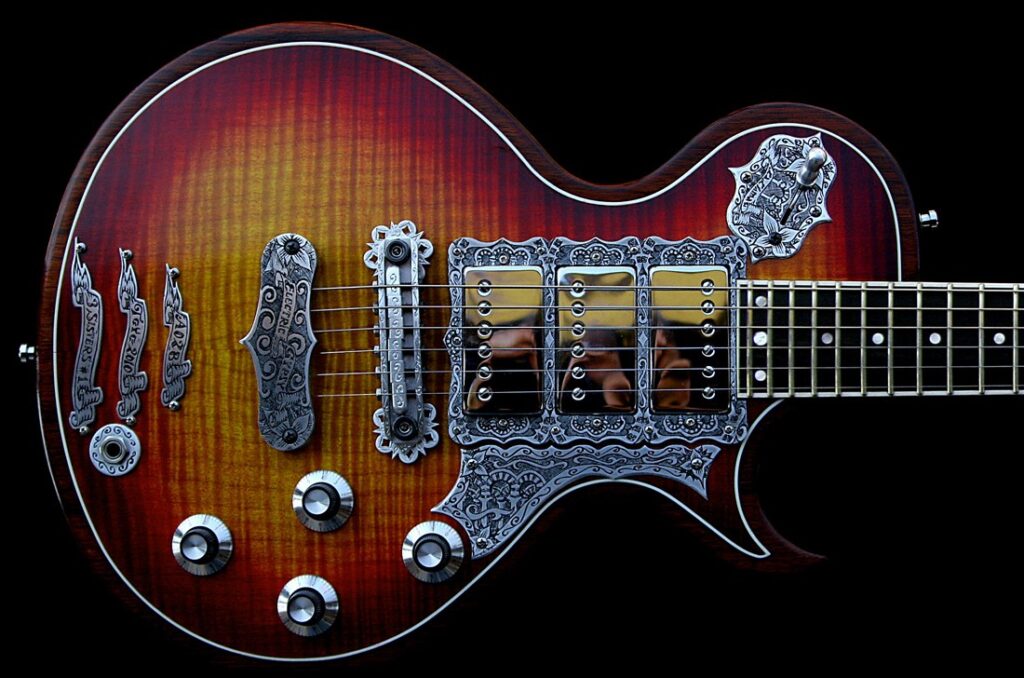
The S-Series
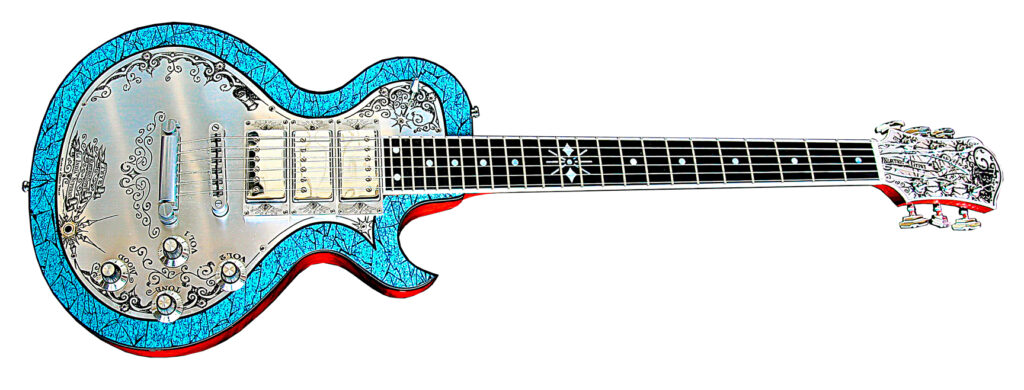
(or ‘Supreme’ Series)
Also around that time I planned, designed, and built the first guitar of a 2nd series (which I called the S-Series) which would carry not very time-consuming hand-engraved aluminum plates but acid-etched ones. I replaced the also very labor-intensive bound hand-mosaic with a solid ‘C’-channel with one-piece printed insert. Hand-made bridges and tailpieces I replaced with Tone-pros bridge and tail. I searched and found a few dedicated guitar builders whom I trained in making this kinda weird (very different) guitar and voila, I could offer a guitar with the Tone and playability, and -or so I thought) most of the looks of my original first model. The new (2nd) series was called the S-Series, and in order to distinguish, my own all-hand-made ones were now (following a long Spanish tradition in lutherie) the A-series.
An then the complaints started coming in. Dealers, distributors didn’t like the printed inserts. So I offered an upgrade to real mosaic and called that the S+. I sold many of both S and S+, started working with a much better team of builders, and we made and sold many excellent guitars.
T-Series
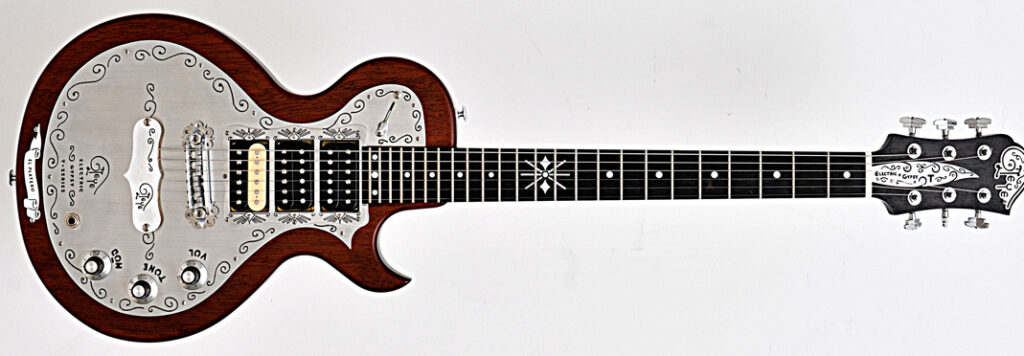
So in late 2009 we added that 3rd series series (the T-Series) and I was able to re-design with the help of an excellent engineer-friend Curt) a streamlined version of my own bridge and tailpiece that I could offer on all non-A guitars.
The T-Series: At first I only offered that as a 3-pickup, rapidly followed by a single-pickup version (called “La Pirata” – pirates having in the caricatures one eye, one hand, one leg, so I called the one-pickup guitar ‘Pirate’) and then (inspiration Keith’s ‘Macabre guitar’) I also built and added to the catalogue a 5-string version. Quickly followed by an even more Pirate inspired which I called the “Scallywag.”
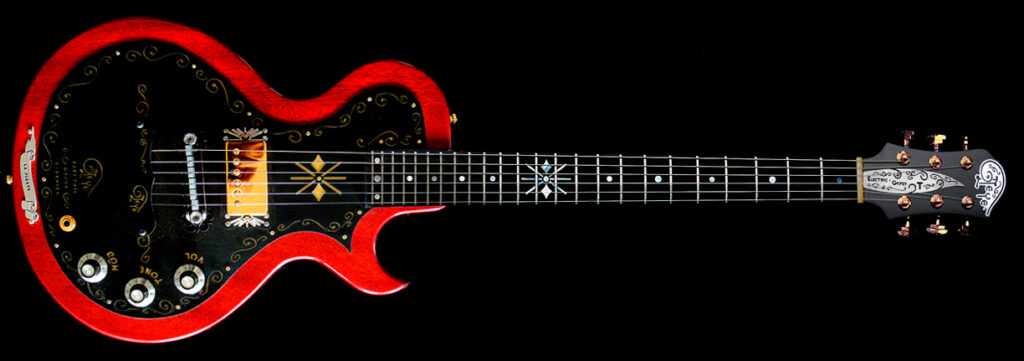

FS-Series
And when I finished and started showing around my very first La Perla guitar, I realized I must also have a name for this above-A-Series and she became the ‘Outside-of-the-Series-Serie, Fuera de Serie, literally meaning ‘Outstanding’. I built an FS La Perla for a customer in Canada, who insisted on a hand-engraved dragon rear plate, then ordered another FS- guitar (“Just surprise me Teye”) and this I did, using a piece of Ziricote that I’d bought at that years NAMM show, and she became the El Dorado (later favorite of Rich Robinson of the Black Crowes) and then this same customer wanted a guitar designed just for him. I made an homage to his name, Constantine, and used references to the city of Konstntinopolis (modern day Istanbul in Turkey, where my wife and I had performed many times as a Flamenco duo)
More changes. I found a big piece of ultralight ultraresonant Mahogany and made that into a double-neck guitar (the FS-06+07 (even Paul Reed Smith was impressed: I even chambered the headstocks and kept the weight down to almost a single-neck)
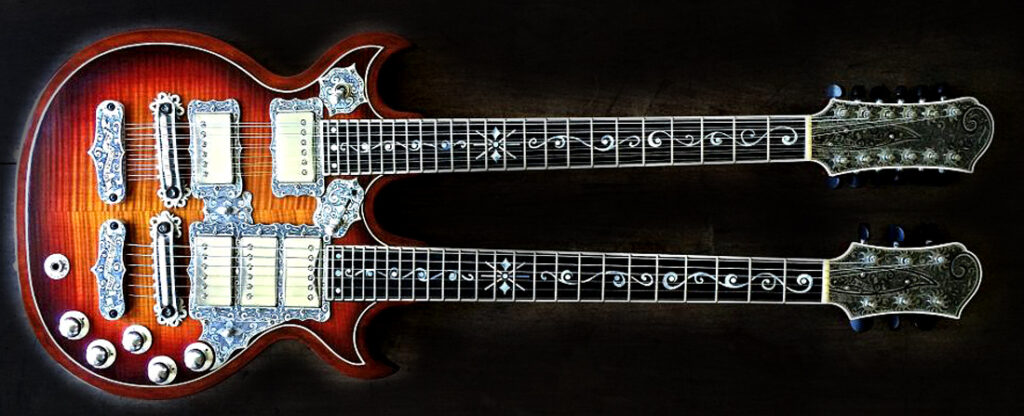
R-Series
The T-Series carried perforce of her plate design a slightly compromised 3-knob electronics harness with a reduced Mood-circuit. I finally found a way to outfit this guitar with a full plate while still looking highly original, and made some more changes, gave her a 40knob full harness and that became the R-Series: with a full metal plate called the “El Platero” and in natural Padouk wood called the “La Gitana”.
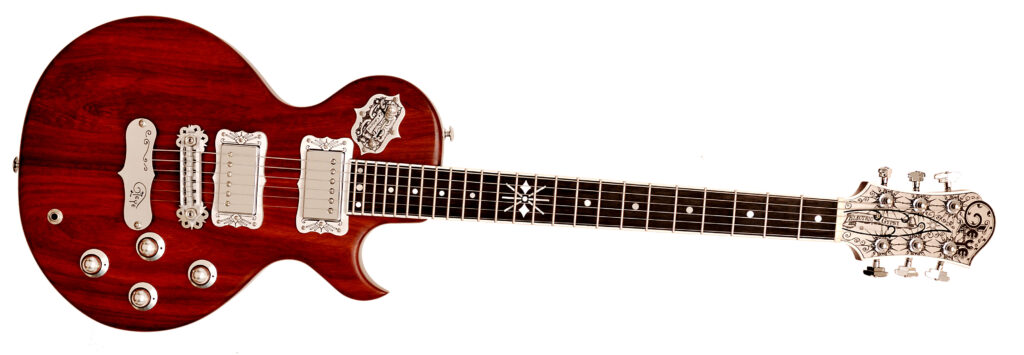
Start of the Teye BASS
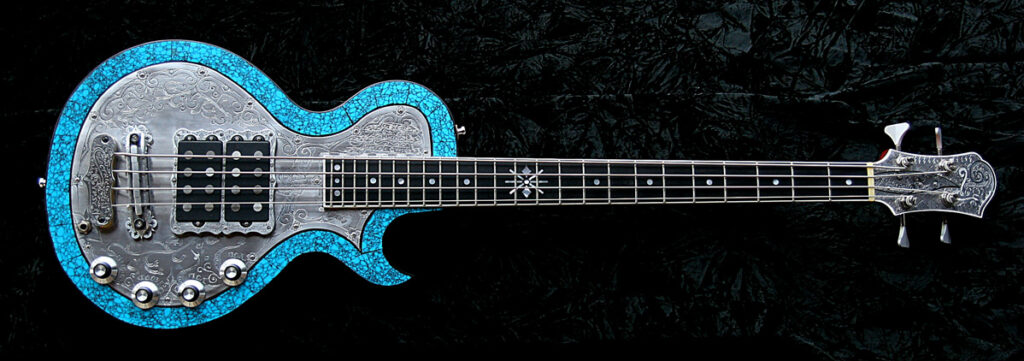
Then a friend from Canada mocked up a bass in Photoshop and insisted I build it. Which I did after weeks of painstaking design, to prevent neck-dive and to maximize Tone and Versatility. The customer claimed that this bass delegated all his vintage prize basses to the closet and that no one could believe the TONE. So this became the prototype and yard-stick for other models of Teye-basses. As with the guitar, I wanted a single knob to alter the instrument’s character between my favorite basses.
Which were: the Jazz bass, Music Man Sting Ray, Thunderbird, and believe it or not the 1969 Ampeg Dan Armstrong. A friend used one on a 1985 demo and I have always LOVED the snarl.
It already being the age of the Internet, I quickly found and downloaded a bunch of pictures, then used Photoshop to re-size them all on top of my own bass blueprint, bridges and nuts lining up, then making marks, notes, and measurements of the exact position of all pole-pieces. Photoshop is an excellent tool for this. Then I decided on which pickups to use to be able to ascloseaspossible emulate all that, and wired it all in typical weird Teye-way. To great and astounding sonic result. The Teye-bass-Mood-knob was a fact. Dream, investigate, look, learn, design, and experiment.
New developments since then.
I’d always wondered why people like Jimi, and Doyle Bramhall had such great Tone from their Strats while in the hands of mere mortals the guitar tends to sound thin. Once in 1978 when I’d (of course!) broken my beloved Gibson SG but still needed to play a show with my band Manilla Madness, our manager loaned me his Strat, and out of wild frustration that it wouldn’t produce my ‘bread&butter’-sound, I actually ended up banging it onstage…
So WHY? The Strat is by no means a symmetric guitar and stringing it upside-down dramatically alters the way the strings address the acoustic generator of the body. Also when you use a flipped-over headstock, suddenly the dead pieces of string (between nut and tuner) are dramatically different, much more logic (see pianos). What did I do? I built a LH Strat for myself and used it flipped-over, playing it Right-Handed. My conclusions were: 1) a flipped-over head and a flipped-over bridge pickup alone do not make for a better Strat but to flip the entire thing gives a dramatically better instrument. Such was my conclusion as well as quite a few other guitarists that saw the show and played for themselves.
And then I went to the drawing board, and came up with a radically different guitar, using my LH Strat, and my Prince Cloud guitar as guidelines. Enter the F- (short for Leo) Series, the model I gave a more poetic name: the Gypsy Queen.

Now for a Mood-knob: What? People would expect one by now.
Just like the Electric Gypsy model was able to change from thick humbucking tones to more lean sounds, why not try the opposite on the four-Strat-pickups equipped Queen? I wired three pups in the traditional Strat-fashion and then wired the RPRW 2nd pickup that I inserted next to the bridge pickup,variable in series in humbucking fashion with whatever pickups already selected. I KNEW that the bridge pickup with the neck pickup sounded great because I once (in 1985) wired a VOX teardrop guitar like that and it had 3 1964 Strat pickups (!) so all this weirdo-wiring and guitar shape wound up with a Strat that could sound a LOT bigger than any Strat you’d ever played. A LOT more resonant and a lot more ‘oomph’ by way of that weird pickup-setup. A little bit of fine-tuning of the electronics and friend and foe was convinced: crazy OK, but (and I heard that a lot) “Why has no one else ever thought of this before?”
The S-Series went evermore luxurious, and then one day I decided on a rather drastic interior construction which would be undetectable from the outside, so I simply dis-continued the S(+/Custom-Plus) Series and named the new guitar the E-Series.
Gypsy Arrow: another of my dream models, this shape actually is very responsive and resonant. But I’ve always disliked the ‘male’ shape of those kinds of guitars, so I designed her to be feminine. The shape came to me in a dream in Spain, and when I showed the prototype to our current shop manager and Shipwreck Queen Finish Lady miss Kelli, she immediately said: “Those are hips!”
I immediately hatched the plan that I would build the resulting guitar for myself. And I did. Already before mounting any parts except tail, bridge and tuners, I put strings on her and she was …extremely responsive and resonant. I remember I completed her on Saturdat April 25th 2015. My band The Barbarians of Sevilla had a gig that afternoon in the park in Austin. New orker Leo, A good friend of our bass player was going to sit in on our last song that day. This was the farewell performance of our very talented young singer Christine (who bytheway had done the shipwreck finish on that new Gypsy Arrow!) So we schlepped our usual arsenal of vintage Ampeg amps to the park and plugged in. Both Andy (drums) and Bruce (dass) leaned forward when they heard the first TONES of the Gypsy Arrow: “WHAT is THAT?” She sounded that glorious!
These were also the days (2013/2014) when a group of venture-capitalist from Dallas came on board as investors, enabling me to develop yet another project that I had designed to bring a more accessible guitar to market: “The Coyote.” After a few sleepless months in which those boys basically took over the entire operation, we (being my business partner of the first hour Evert, and I) found out that we had done some unwise signing and we were now competing with my own old designs. For me this meant two things: 1) my new stuff HAD to be better than my old stuff, and 2) I finaly was offered a chance to change all that stuff that I was planning years already to change, but you can’t practically do that in the middle of production runs and keeping the company alive.
Abut now I did. “Coyote” lost all of its cost-dictated-restrictions and became “Super-Coyote” (a step-up in quality) and I kept on designing,
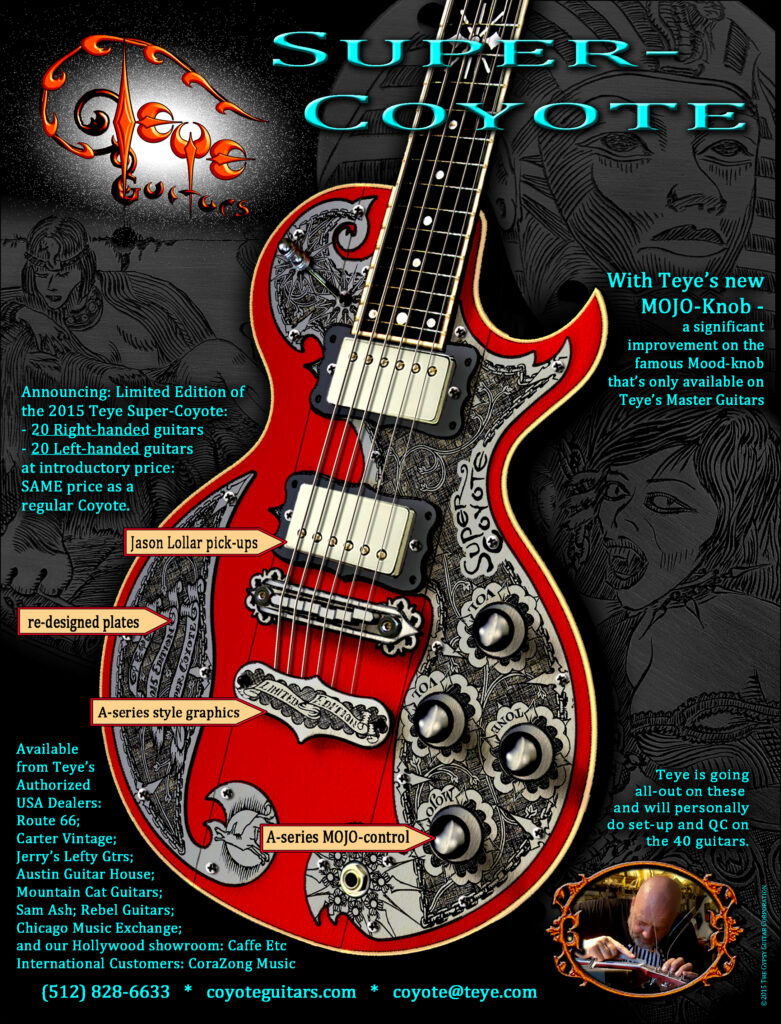
THERE EVEN IS AN OWNERS FACEBOOK GROUP DEDICATED TO THAT ORIGINAL COYOTE!
2014 Coyote “The Teye Enthusiasts Group” ; https://www.facebook.com/groups/346545256361938
but I introduced the Super at the same price, so,,, We sold 40+ guitars on this ad alone, very welcome funds to pay for lawyers! BTW the red guitar pictured was just a montage in Photohop from screenshot of my CAD software and some tricked-in pickups, bridge and tailpiece. We did not have an actual guitar to photograph!
The resulting new T-Series became the Super-T-Series.
The new E-Series became the Super-E-Series, and then the Emperor-Series.
R-series was discontinued.
And another important change: the all-hand-made-by-me A-Series saw a change too. In the old days you could simply order a La India A-Series, or any of the other models I’d made. On those 2014 heady days of re-designing everything, I built a bunch of guitars not sticking to the old models but simply making what I felt like. Part of all that was also, ‘making for which I happened to have parts/material!
The Master-Series:
And I named these new guitars: Master Series. I made a new logo, one for the Masters and one for the other (‘production’) guitars, made a new serial number badge, and – in order to distinguish New ‘Teye’ from Old ‘Dallas’ and to fix another of my discontent (that the Mood-knob sometimes just didn’t go ‘deep’ enough) I developed a new, deeper and more musical version which I called the MOJO control.
And I made a new series, based on the looks of my old models “LaIndia”,”La Mora”, and “La Canastera” and the construction of the Super Coyote, calling them the L-Series “Apache”. “El Toro” and “Cleopatra” for that one I revived the logo of my old 1984 band ‘Cleopatra & the Shakin’ Sphinxes’s.
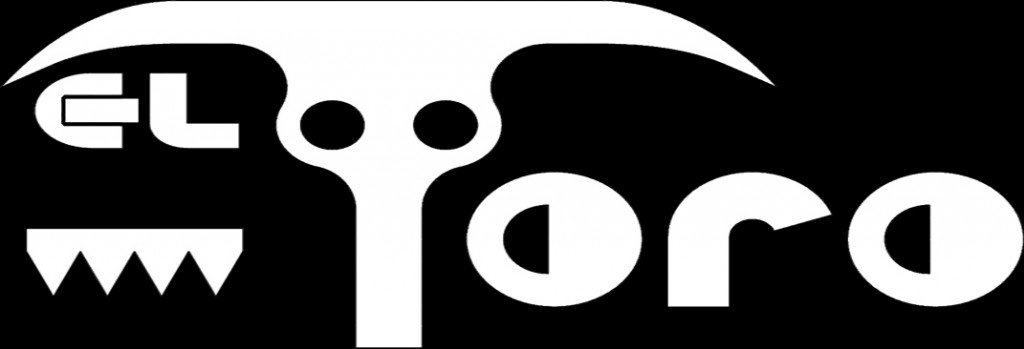
The fight was unfair. The Dallas boys had all the money but we (Evert and I) had all the credibility, all the good designs, all the goodwill, and in the end we received all our tools back and the ruling that the Dallas boys need to stop using my name (they circumvened this by calling their operation TG guitars – clever!) but all the rest stopped. Still there were – and are – many guitars floating around called ‘Teye’ without even a millisecond of my actual involvement.
